As Putin celebrates the 77th Victory Day over Nazism, he should remember that of the 26.6 million Soviet lives lost in World War II, 40 per cent were Ukrainian. Today, Russia throttles a Jew-led Ukraine – condemning it for pursuing Nazi ideology
 By Akhil Bakshi
By Akhil Bakshi
Russia believes that Ukraine, once a part of the Soviet empire, has become a CIA theme park. Having plotted a regime change in Kyiv in 2014, Washington pulls the strings of a government that is hostile to neighbouring Russia: a government reeking of Nazis. According to the Russian leadership, leading parliamentarians in Ukraine are the political heirs of the infamous fascist Organisation of Ukrainian Nationalists (OUN) and Ukrainian Insurgent Army (UPA). They publicly glorify Hitler and call for the persecution and expulsion of the Russian speaking minority.
The radical, right-wing OUN was indeed formed in 1929 to work for Ukrainian independence through use of violence and terrorism against its “enemies” – Soviet Union, Poland, Czechoslovakia and Romania.
When Nazi Germany invaded the USSR in June 1941, Ukraine bore the brunt of the attack. The blitzkrieging Nazis cut through the Soviet defences, destroying thousands of tanks and planes. Kyiv fell in September, with 660,000 Red Army soldiers surrendering. By the end of 1941, entire Ukraine and 3.5 million Red Army soldiers were in German hands.
Initially, OUN and a part of Ukraine’s population, fed up with the repressive communist rule, welcomed the Nazis. Soon, they would bear the brunt of the Nazi whip.

Pursuing his idea of lebensraum, or living space, Hitler’s plan was to liquidate the population of eastern Europe all the way to Volga and settle its fertile agricultural lands with German colonists. To oversee the execution of his plan, Hitler spent the summer and autumn of 1942 and a part of spring of 1943 in Ukraine, in a fortress built for him by Soviet prisoners-of-war in a pine forest near Vinnytsia. Seven million Ukrainians, or 16 percent of the country’s population, was eliminated between 1939 and 1945. One million of them were Jews, the first to be targeted.
Leaflets distributed in late September of 1941 in Kyiv asked the Jews to appear by 8 a.m. on September 29, with their valuables, documents and warm clothing, next to the Jewish cemetery in the outskirts of Kyiv. Failure to do so would be punishable by death. As most of the Jewish men were away fighting in the Red Army, those who assembled were mostly women, children and the elderly. The Jews who had assembled outside Kyiv thought they would be resettled.
After confiscating their valuables and documents, the Nazis stripped them naked and shot them in batches of 10 on the slopes of a ravine. Over two days, 33,761 Jews of Kyiv were shot dead. Their bodies, left to rot, provided a feast to the vultures.
Similar exterminations of Jews took place in other parts of the republic. Their neighbours either seized the properties of the Jews or just looked away. However, there did exist some noble-hearted Ukrainians who saved Jewish lives.
Next to be eliminated were the Ukrainian nationalists, members of the OUN and the gypsies.

The Nazis pillaged cathedrals, monasteries and museums and stole precious antiques, paintings and sacred objects that had been spared by the communists. They closed universities and took away the teachers, students and youth as forced labour to Germany. Between 1942 and 1943 about 2.2 million Ukrainians were packed off to work in Germany. Children above 15 years of age were denied schooling.
Farmers were forced to part with their produce. Many Ukrainians died of hunger and disease – as well as in Allied bombing of Nazi armament factories where they worked. Those who were liberated by the Red Army at the end of the war were considered traitors and shunted off to Soviet concentration camps in Siberia. When the Second World War ended, Ukraine had only ghost cities and a demolished industrial base.
Meanwhile, OUN’s breakaway faction, the extremist and fascist OUN-B established the Ukrainian Insurgent Army (UPA) that, between 1943-1944, carried out large-scale ethnic cleansing of Polish people. It is estimated that 100,000 innocent Polish civilians were exterminated in Eastern Galicia and Volhynia, bordering Poland.
Even after the Second World War ended, UPA continued its fight against Soviet and Polish forces. The West, sniffing an opportunity to weaken the Soviet Union, fanned the flames.
According to Per Anders Rudling in his paper The Return of the Ukrainian Far Right: The Case of VO Svobada: “During the Cold War, US, West German and British intelligence utilised various OUN wings in ideological warfare and covert actions against the Soviet Union.” This support continued post-Cold War.
Today, several right-wing political organisations in Ukraine claim to be the offspring of OUN and its fascist ideology. These include Congress of Ukrainian Nationalists, Svoboda, and Ukrainian National Assembly – Ukrainian National Self Defence. These are the “neo-Nazis” Russians claim to be after.
While Russia surely exaggerates the influence of these groups in Ukraine’s governance, the West pretends they do not exist. As Russia and the Western alliance play out their vicious politics, Ukraine will, as it did after the Second World War, end up with ghost cities and a demolished industrial base.
Also read by the same author: Ukrainian fighters show their Cossack Spirit is alive and kicking – THE NEWS PORTER
(Featured/Main picture on top: Bronze relief of Soviet soldiers defending their land against the Nazi invasion, Kyiv. Photo by Akhil Bakshi)
Akhil Bakshi is the author of ‘Ukraine: A Stolen Nation’



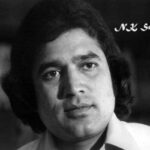
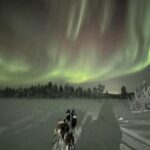
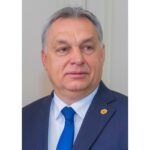



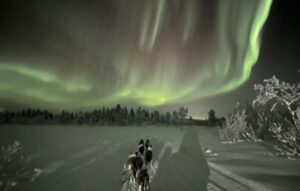
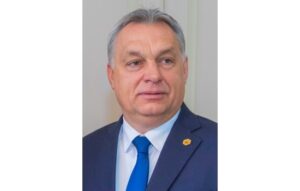
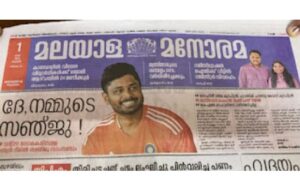
This article presents deep insights aboutUkrainian people with historical sesitivity. Readable informative put across in simple language makes a must read article.
A surprising and exciting article, especially for non historians. Pretty informative and simple presentation makes it worth read.
An interesting article depicting the history and evolution of the circumstances of Ukraine, Russia and the Nazi Germany. Well structured and very informative.